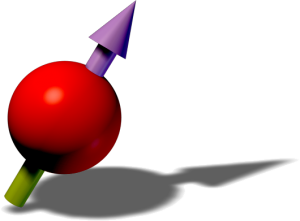Erbium has very special properties that make it unique: a remarkably strong magnetic moment, many valence electrons, clock transitions, and an exceptionally rich internal atomic structure. In the ERBIUM LAB we bring all these properties in the quantum regime together to study strongly dipolar gases both in the continuum and in optical lattices
Our experiments have focused on studying the impact of dipolar interactions in various scenarios. In bulk systems, we have provided the first evidence of the many-body nature of these interactions and of their interplay with the Pauli exclusion principle, through the observation of the deformation of the Fermi surface [1]. At the microscopic scale, we focused on the intriguing chaotic scattering behavior of Er atoms, arising from the interplay between the orbital and magnetic anisotropies of the particles [2]. In lattices, we achieved a significant milestone by being the first to realize the extended Bose-Hubbard model, revealing the modified transition from a superfluid to a Mott insulator driven by dipolar interactions [3].
These explorations have led to an in-depth study of supersolidity, made possible by two fundamental experimental achievements. The observation of the transition from the ground state of an Er Bose-Einstein condensate to a self-sustaining macro-droplet state, demonstrated the unexpected stabilizing effect of quantum fluctuations [4]. Furthermore, the pioneering observation of roton-like quasiparticles revealed the possibility of inducing crystallization of the system via dipolar interactions [5]. These efforts have culminated in the long-awaited production of a long-lived supersolid, characterized by complex behavior reminiscent of both a crystal and a superfluid, as part of a collaboration between the Er-Dy and ERBIUM teams and our theoretical collaborators at IQOQI [6].
Remarkably, Er also features a large spin, offering many opportunities for quantum simulation. The groundwork has been laid with the implementation of a long-range Heisenberg XXZ model in a fermion lattice and the precise control of spin-exchange dynamics [7]. These efforts have been further enhanced by the recent demonstration of the manipulation of a narrow inner-shell orbital transition at 1299-nm [8], enabling exhaustive control over the spin composition of the system. This convergence of advancements holds the potential for the realization of a new generation of synthetic quantum magnets in clean, isolated, and fully controllable environments. The technological applications of such systems span a wide range, from precision sensing to quantum information processing.
[1] For a general overview of Fermi surface deformation, see our writeup. This work was published in Science, and the preprint can be found on the arXiv.
[2] For a general overview of this work on quantum chaos, see the following article on ScienceDaily. This work was published in Nature, and the preprint can be found on the arXiv.
[3] For a general overview of this work on the Bose-Hubbard model, see the press release by UIBK. This work was published in Science, and the preprint can be found on the arXiv.
[4] For a general overview of the BEC macrodroplet, see our writeup and the article by Physics Magazine. This work was published in Physical Review X, and the preprint can be found on the arXiv.
[5] For a general overview of the roton in Erbium, see our writeup, the press release by UIBK and . This work was published in Nature, and the preprint can be found on the arXiv.
[6] For a general overview of the supersolid phase, see our writeup and the press release by UIBK, and the article by Physics Magazine. This work was published in Physical Review X, and the preprint can be found on the arXiv.
[7] For a general overview of these lattice-confined dipolar fermions, see our writeup. This work was published in Physical Review Research, and the preprint can be found on the arXiv.
[8] For a general overview of this narrow inner-shell orbital transition, see our writeup. This work was published in Physical Review Research, and the preprint can be found on the arXiv.
A full list of the ERBIUM Lab publications can be found here.
Interested in joining us? Check out our open positions here.




















